Last year over 700 boat owners who have non-trailered boats moored in marinas around Aotearoa…
Understanding the dynamics of NZ’s recreational vessel transport network: a case study around the iconic Great Barrier Island
The MANAGE AND RESPOND workstream of the Marine Biosecurity Toolbox programme is looking to provide a better understanding of the biosecurity risk that vessels play in the spread of marine non-indigenous species.
 Cal Faubel from the Marine Spatial Ecology and Conservation Lab, Deakin University, Australia, is commencing a project on this topic. Cal is an honours student with a passion for marine conservation. Graduating in 2020 with a Bachelor of Environmental Science (Marine Biology), Cal has a strong interest in solving marine related metapopulation and network problems.
Cal Faubel from the Marine Spatial Ecology and Conservation Lab, Deakin University, Australia, is commencing a project on this topic. Cal is an honours student with a passion for marine conservation. Graduating in 2020 with a Bachelor of Environmental Science (Marine Biology), Cal has a strong interest in solving marine related metapopulation and network problems.
One of the key challenges for marine biosecurity is to predict where new pest incursions are likely to occur. This is extremely difficult as New Zealand has a very intricately connected maritime domain comprising a wide range of vessel types and other transport modes. This creates a highly dynamic system – and understanding this system can provide significant support to effective biosecurity management. Cal’s project will use a simulation and network-based approach to advance our understanding of transport patterns and associated risks.
In 2019, a small population of the non-indigenous tunicate Clavelina oblonga was discovered on the natural benthic substrate of Aotea Great Barrier Island (GBI). Being a popular site for boaters and visited by vessels originating from all around New Zealand makes the location a potential at-risk site for marine pest establishment and spread. GBI features high marine biodiversity and cultural significance, making it a site of high management priority. Interestingly, GBI remains the only known location in New Zealand where C. oblonga has been detected. GBI is not an international port of entry and is hence not the place we would have expected this species to turn up first. Which leaves us with many questions. How did it get there? where from? where could it potentially spread to, and how rapidly? Determining this now, while the species is restricted to a single localised population, is very important.
This project, using network and epidemiological modelling approaches, will shed some light on these questions by characterizing New Zealand’s domestic marine transport network, beginning with a focus on recreational vessels. New Zealand has one of the highest per-capita boat ownership rates in the world, with more than 15,000 sailing yachts and motor launches permanently residing in our coastal waters. Most of these vessels do not have satellite tracking systems, meaning that movement patterns cannot be captured and readily analysed. Instead, they need to be constructed based on voyage data elicited from vessel owners and operators.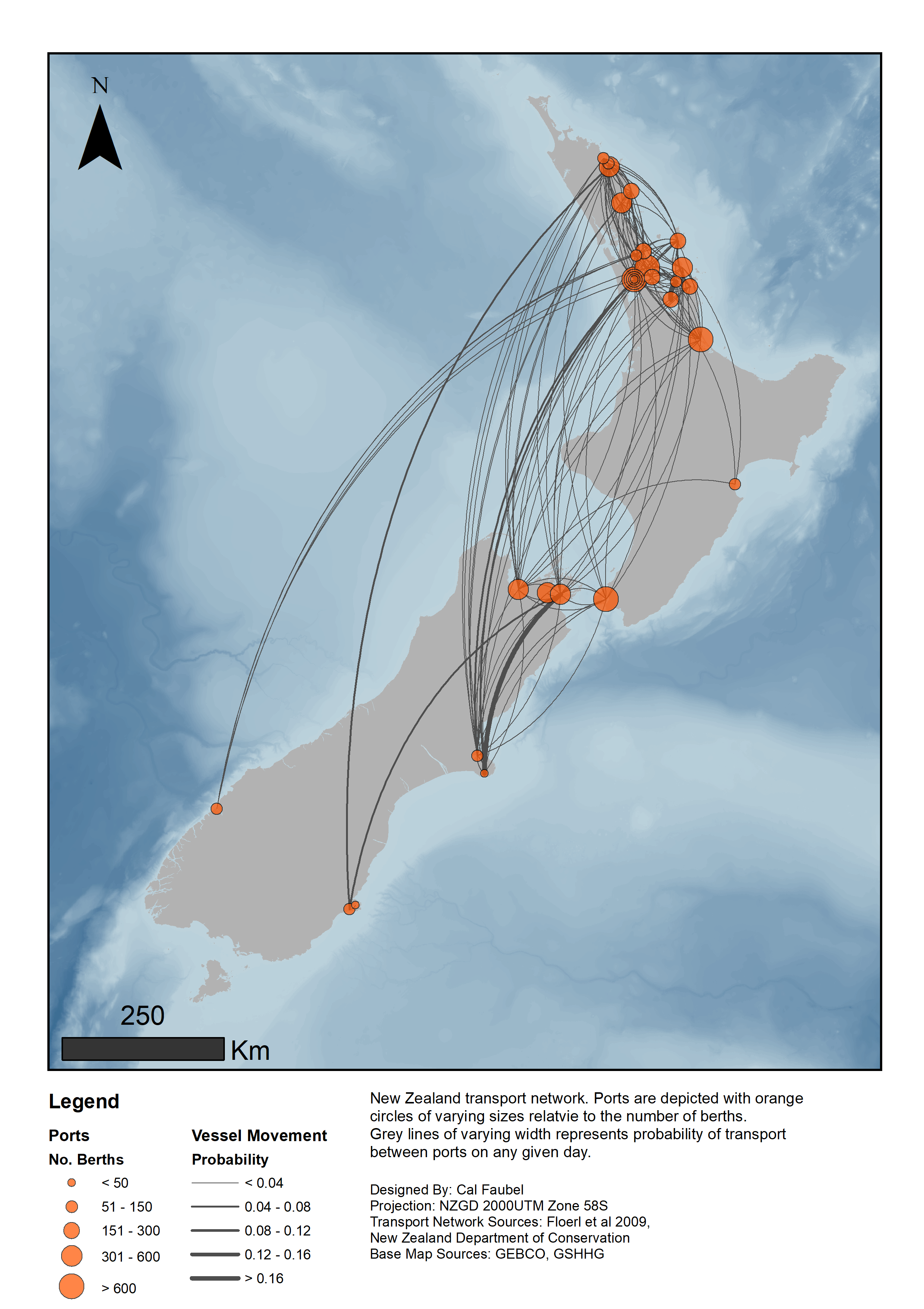
Cal’s research will utilise an existing dataset on the hull maintenance and movements patterns of over 1,000 yachts between 36 coastal locations throughout New Zealand. GBI is a key component of this dataset, and particular emphasis will be given to determine its role within New Zealand’s domestic transport network, including in the specific context of the local presence of C. oblonga. Cal and his colleagues will parameterise models to reflect known levels of susceptibility of vessels to colonisation over time, and incorporate the biology and key traits of C. oblonga. Network simulations will be conducted to identify scenarios of the potential arrival of C. oblonga to GBI, and its propensity for further domestic spread.
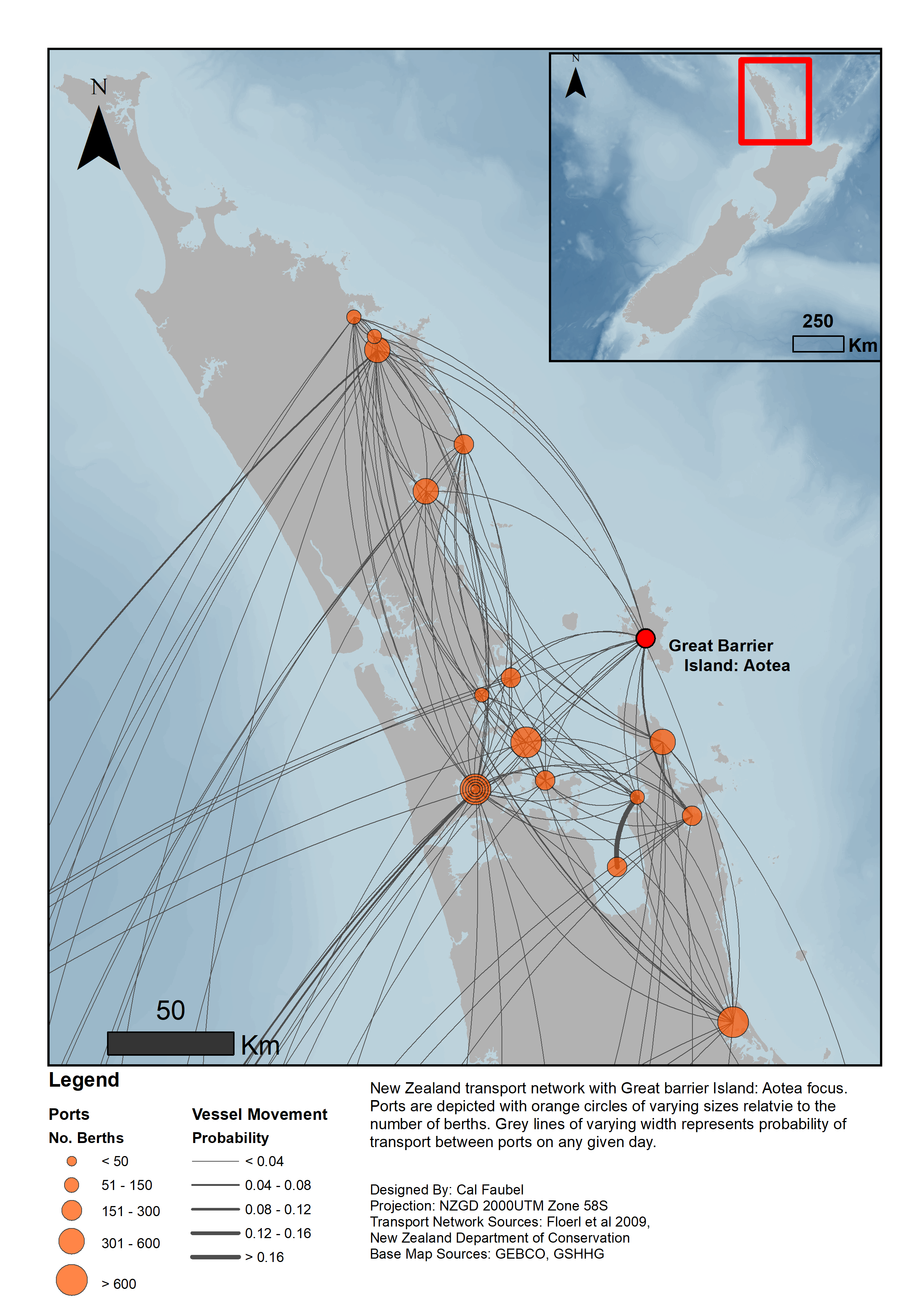
This project will be undertaken in close collaboration with Auckland Council (Samantha Happy) and the Ministry for Primary Industries (Abraham Growcott), regulatory agencies actively involved in understanding and managing C. oblonga. In addition, and to assist science and management with tackling or preventing potential future incursions, Cal will also apply his models to other known or hypothetical marine pests with varying life histories, to examine which functional traits have greatest influence on rate of spread.
The project’s outputs will support Auckland Council, Ministry for Primary Industries and others in identifying robust and informed approaches for managing marine pest spread through more targeted and cost-effective surveillance and pathway management approaches. This research will be an important step to equipping New Zealand with the tools to better manage incursions of marine pests. Watch this space to find out where our unwanted hitchhikers are most likely to turn up.

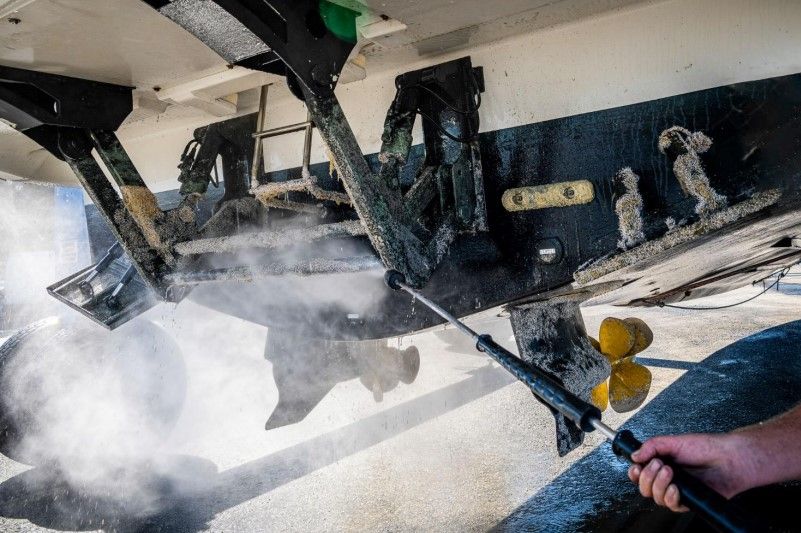
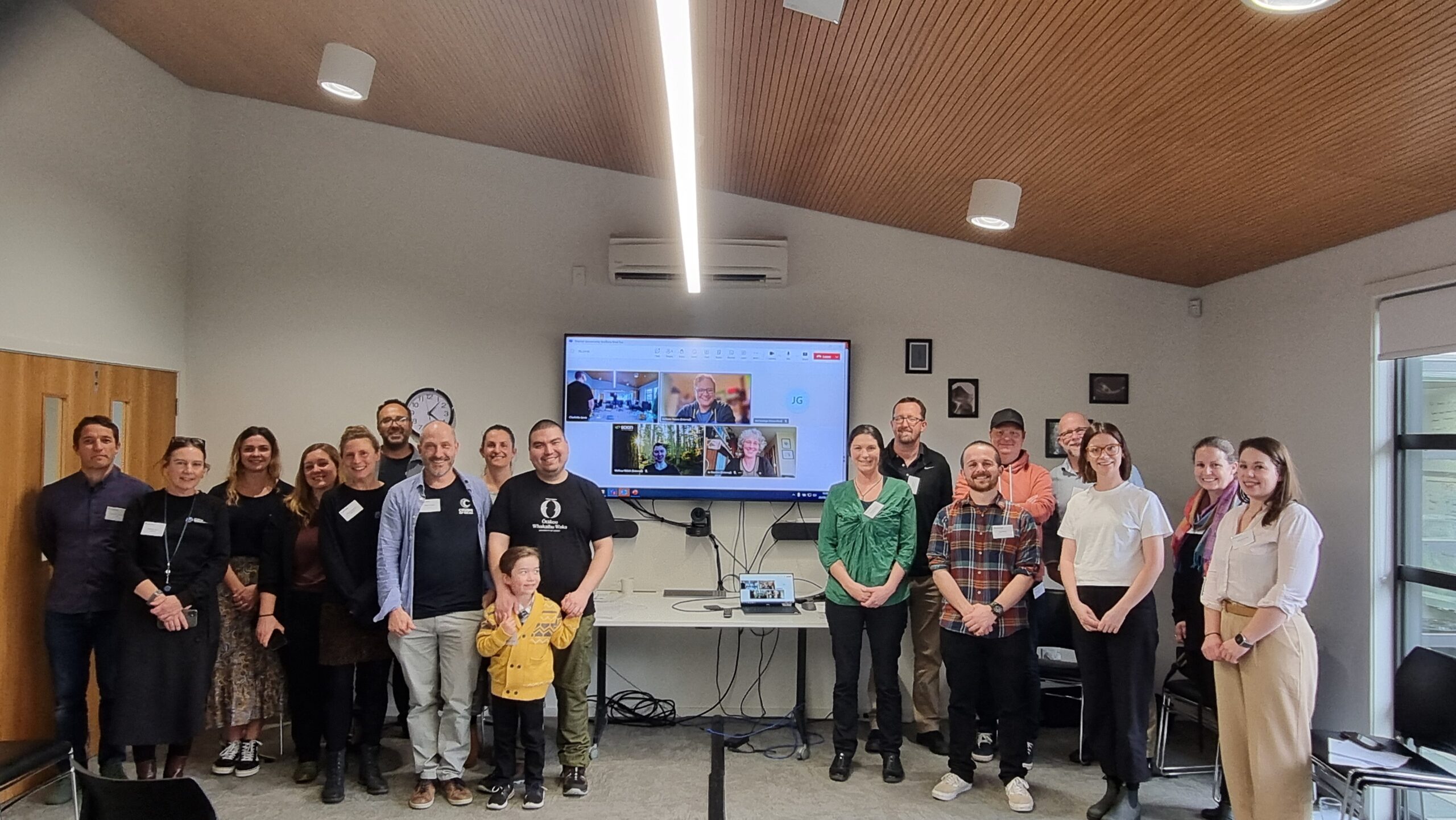
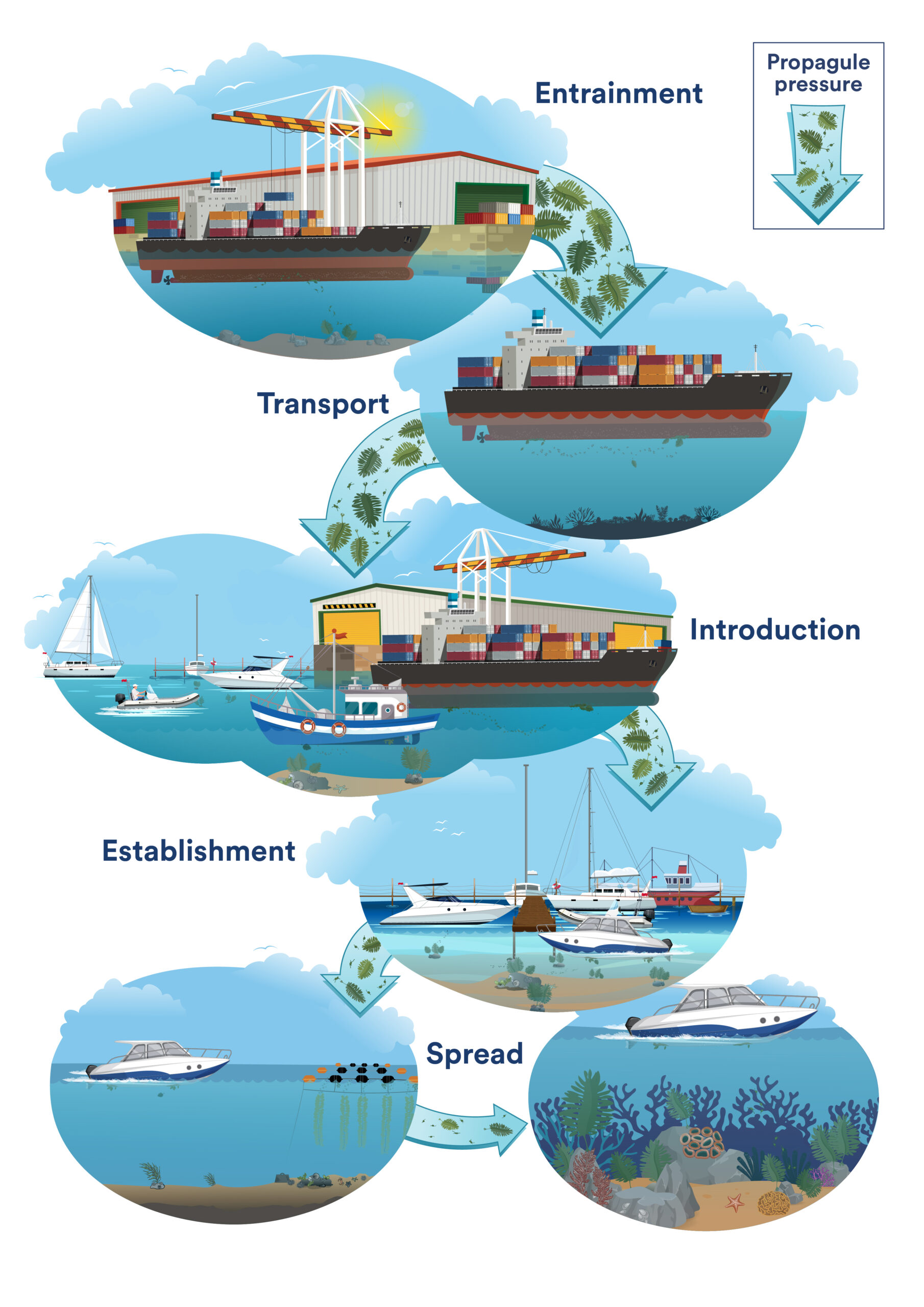
Comments (0)